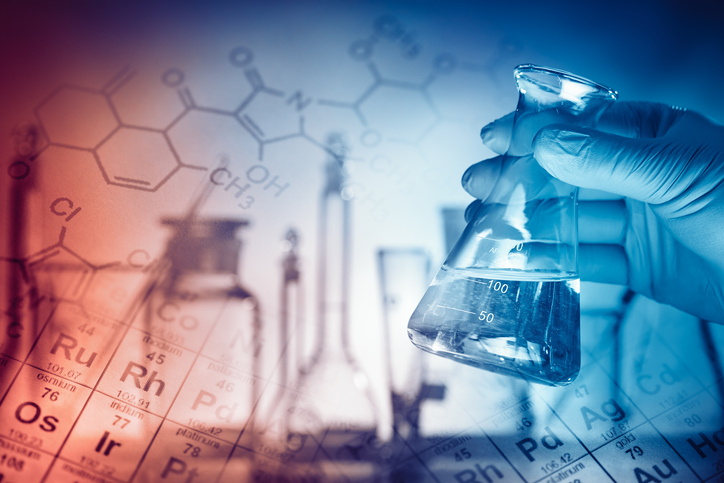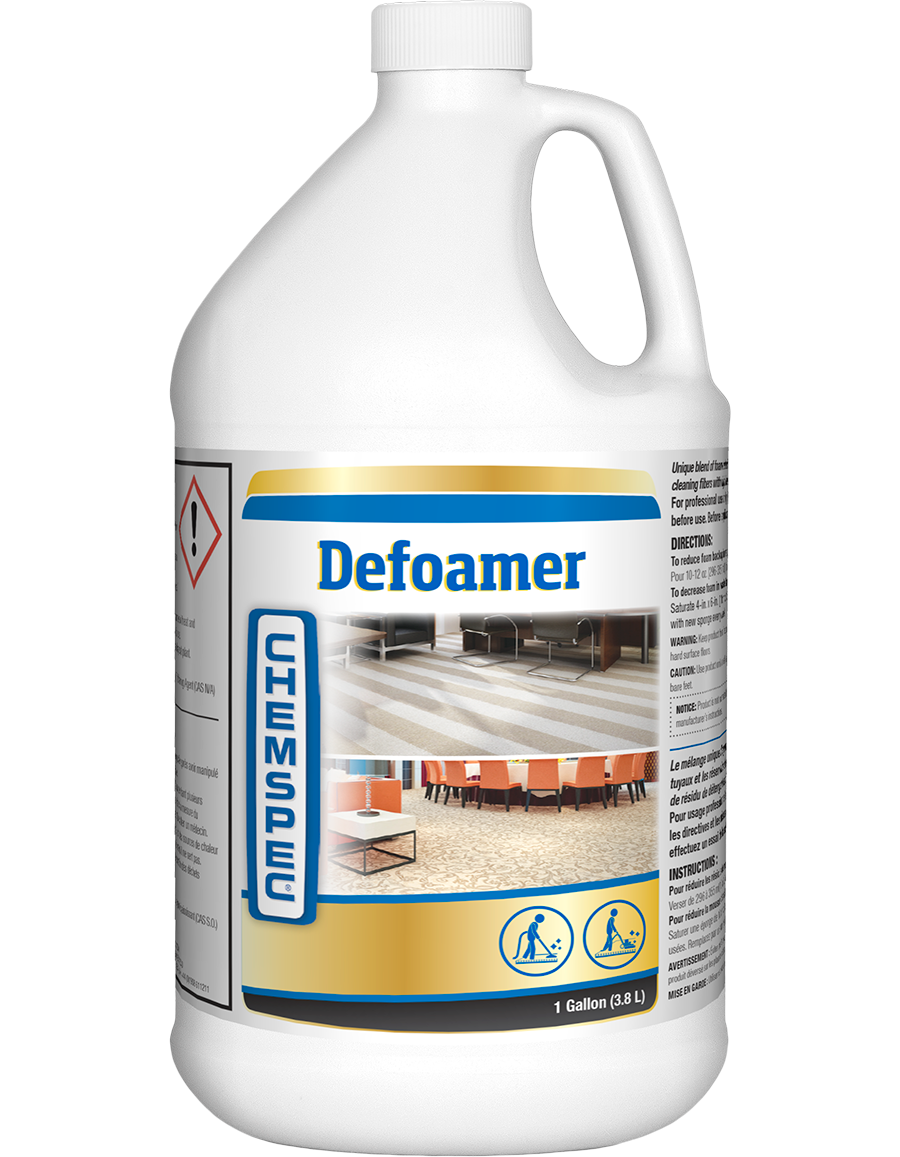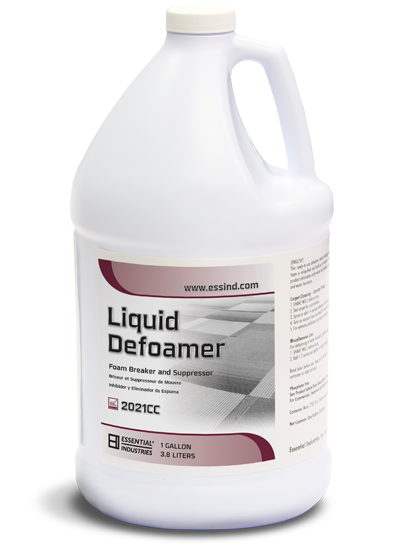Comprehending How a Chemical Defoamer Works to Enhance Industrial Processes
Chemical defoamers play a crucial role in enhancing industrial procedures by effectively reducing foam-related challenges. Their capability to lower surface tension and interfere with bubble development translates right into smoother operations and boosted performance. Nonetheless, the devices behind their action and the variety of readily available solutions warrant a closer evaluation. Chemical Defoamer. Understanding these elements might expose significant insights right into not only boosting production however additionally accomplishing cost financial savings throughout numerous markets. What continues to be to be discovered is how these defoamers can be tailored to fulfill certain operational demands.
What Is a Chemical Defoamer?
A chemical defoamer is a compound especially developed to minimize or get rid of the development of foam in various industrial processes. Lathering can hinder production effectiveness, influencing the top quality and performance of items in fields such as food and drink, drugs, and wastewater treatment. Defoamers are vital in these applications, as too much foam can cause operational difficulties, such as overflow, minimized blending efficiency, and impeded warm transfer.
The choice of a proper defoamer is essential, as various formulations might be customized for certain processes or kinds of foam. Aspects such as compatibility with other components, temperature level security, and the desired application play a considerable role in the performance of a defoamer.
Devices of Defoaming Action
The systems of defoaming activity include intricate communications in between the defoamer and the foam framework. When a defoamer is introduced to a lathering system, it moves quickly to the surface area of the foam bubbles, displacing the maintaining representatives that contribute to foam stability.
As smaller sized bubbles combine into bigger ones, the general stability of the foam reduces. Additionally, certain defoamers might consist of hydrophobic elements that enhance their capability to destabilize the foam by developing an obstacle that inhibits bubble development. This twin activity-- surface area stress decrease and destabilization-- allows for a much more reliable break down of foam.

Furthermore, the thickness and spreading qualities of the defoamer play vital duties in its effectiveness. A well-formulated defoamer will ensure rapid migration and optimal performance, lessening foam formation during commercial processes. By comprehending these mechanisms, markets can better choose and apply chemical defoamers to boost operational performance and product top quality.
Kinds of Chemical Defoamers
Chemical defoamers can be classified into numerous kinds, each customized to particular applications and foam challenges. The primary categories consist of silicone-based, non-silicone-based, and powder defoamers.
Silicone-based defoamers are very efficient as a result of their capability to spread out swiftly across liquid surface areas. They provide excellent foam reductions and security, making them ideal for different industrial applications, consisting of adhesives and layers. Non-silicone-based defoamers, on the various other hand, commonly depend on organic compounds like fatty acids or esters. These are especially favored in food and drink industries because of their low poisoning and regulative compliance.
Powder defoamers contain strong bits that can be added to completely dry processes or formulas. They are usually used in processes where liquid defoamers may not be efficient, giving an one-of-a-kind solution for certain applications, such as in the production of certain sorts of powders or plastics.
Furthermore, each sort of defoamer can try this out be personalized with different ingredients to enhance efficiency, such as surfactants or emulsifiers, allowing for versatility in attending to different foaming circumstances across numerous markets.
Applications in Industrial Processes

In the food and drink sector, defoamers are important during the manufacturing of juices, beers, and dairy products, where too much foam can prevent mixing and filtering processes. By minimizing foam formation, defoamers assist keep constant item top quality and maximize handling times.
In pharmaceuticals, the presence of foam throughout the mixing and formula of medicines can impact dosage accuracy and item security. Defoamers make sure smooth procedures, therefore promoting the production of high-grade drugs.
Wastewater therapy centers additionally depend on defoamers to manage foaming in aeration tanks, which can or else reduce therapy performance and make complex sludge handling. By effectively managing foam, these chemicals boost the total efficiency of treatment processes and contribute to governing conformity.

Benefits of Utilizing Defoamers
While foam can offer significant obstacles throughout numerous sectors, using defoamers offers various advantages that enhance operational efficiency and product honesty. Defoamers properly remove or reduce foam development, resulting in smoother production Get More Info procedures and boosted product top quality. This decrease in foam minimizes disturbances during production, permitting continuous procedure and increased throughput.
Additionally, the application of defoamers can lead to cost savings by decreasing the need for excess raw materials and energy intake connected with foam administration. By enhancing the manufacturing procedure, producers can attain higher yields and reduced waste, ultimately improving success.
Furthermore, defoamers add to better tools efficiency. Foam build-up can lead to obstructing, overflow, and devices wear, resulting in pricey downtime and upkeep. By avoiding these problems, defoamers prolong the life expectancy of equipment and decrease functional costs.
Final Thought

A chemical defoamer is a material particularly formulated to remove the development or reduce of foam in numerous industrial procedures. When a defoamer is introduced to a frothing system, it moves quickly to the surface area of the foam bubbles, displacing the stabilizing representatives that contribute to foam security. A well-formulated defoamer will ensure quick migration and optimum performance, decreasing foam formation throughout commercial processes. Defoamers effectively remove or decrease foam development, leading to smoother production processes and boosted product top quality.In conclusion, chemical defoamers play an essential role in enhancing commercial procedures by efficiently reducing foam formation.